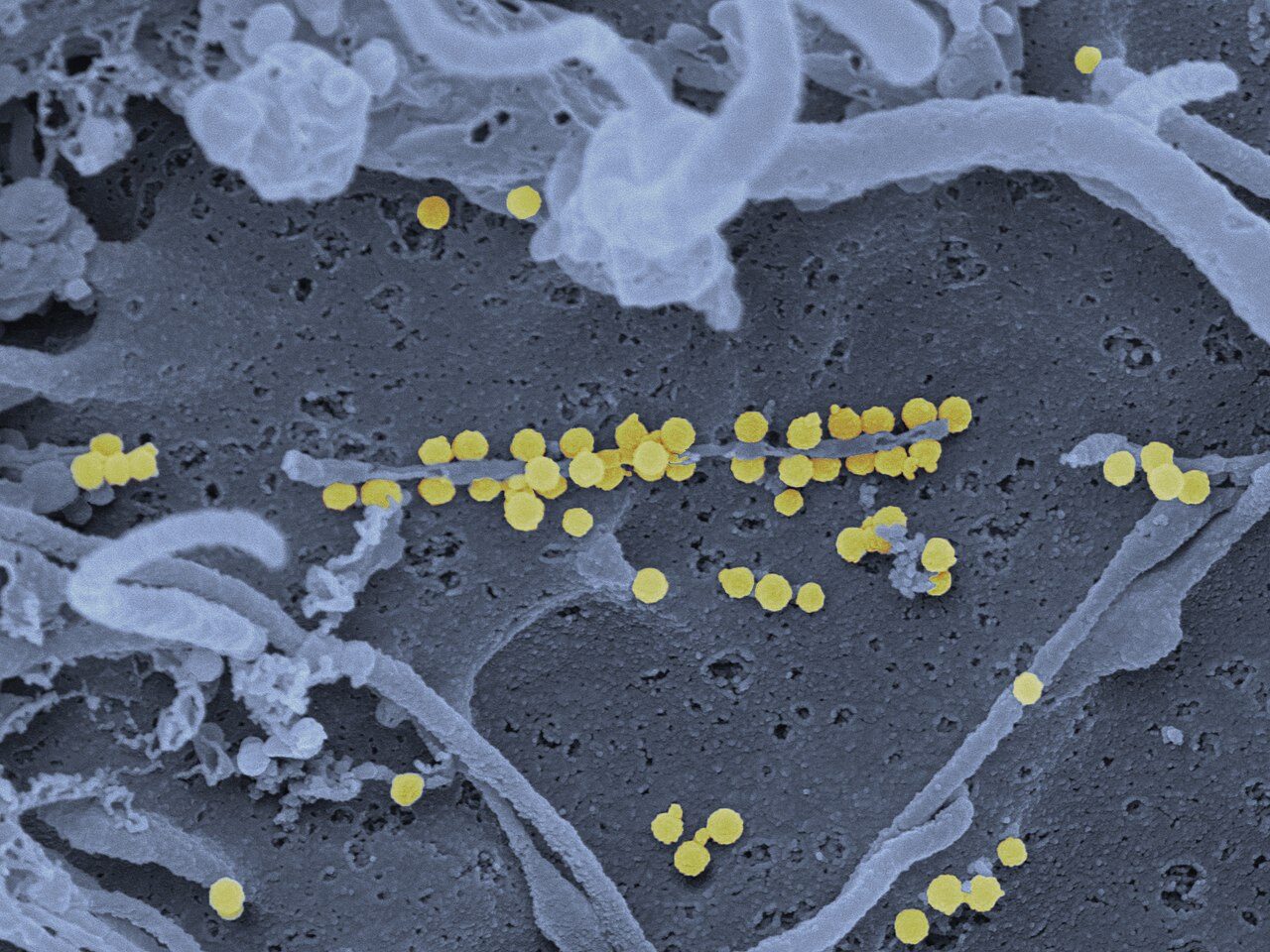
Colorized scanning electron micrograph of viral CCHF particles in yellow
A case of Crimean-Congo haemorrhagic fever has been identified in England, health officials have revealed.
The risk to the public is very low, the UK Health Security Agency said today - after the case was diagnosed in a woman who had travelled to Central Asia.
The illness is a viral disease that's
usually transmitted by ticks and livestock.
It's usually
found in countries where the disease is in an endemic state and the virus is endemic in all of Africa, the Balkans, the Middle East and in Asia.
The woman had visited Central Asia and was diagnosed at Cambridge University Hospitals NHS Foundation Trust.
She is currently receiving care at the Royal Free Hospital in London.
Dr Susan Hopkins, Chief Medical Advisor at UKHSA said: "It's important to be aware that Crimean-Congo haemorrhagic fever is usually spread by tick bites in countries where the disease is endemic, it does not spread easily between people and
the overall risk to the public is very low.
"We are working with NHS EI to contact the individuals who have had close contact with the case prior to confirmation of their infection, to assess them as necessary and provide advice.
"UKHSA and the NHS have well established and robust infection control procedures for dealing with cases of imported infectious disease and these will be strictly followed."
The doctor treating the patient, said she is in a high isolation unit.
Dr Sir Michael Jacobs, consultant in infectious diseases at the Royal Free London, said: "The Royal Free Hospital is a specialist centre for treating patients with viral infections such as Crimean-Congo haemorrhagic fever.
"Our high level isolation unit is run by an expert team of doctors, nurses, therapists and laboratory staff and is designed to ensure we can safely treat patients with these kind of infections."
The main carriers of the virus are Hyalomma ticks.These are not found in the UK and the virus has never been detected here through a tick.Prior to the case revealed in Cambridge,
there have been just two cases of Crimean-Congo haemorrhagic fever detected in the UK.
The last one was detected in 2014, and prior to that, a case had been detected in 2012.There was no evidence that these cases caused any further transmission.
People who contract the illness with have sudden onset symptoms with initial signs including headache, fever, back pain, joint pain, stomach pain and vomiting.
These key
signs are similar to that of Ebola.
In severe cases of Crimean-Congo haemorrhagic fever, people may also suffer changes in mood and sensory perception.
People who visit or who live in endemic areas should use protective measures to avoid contact with ticks.
These measures include avoiding areas where ticks are abundant at times when they are active, using tick repellents and checking clothing and skin carefully for ticks.
There, fixed it.